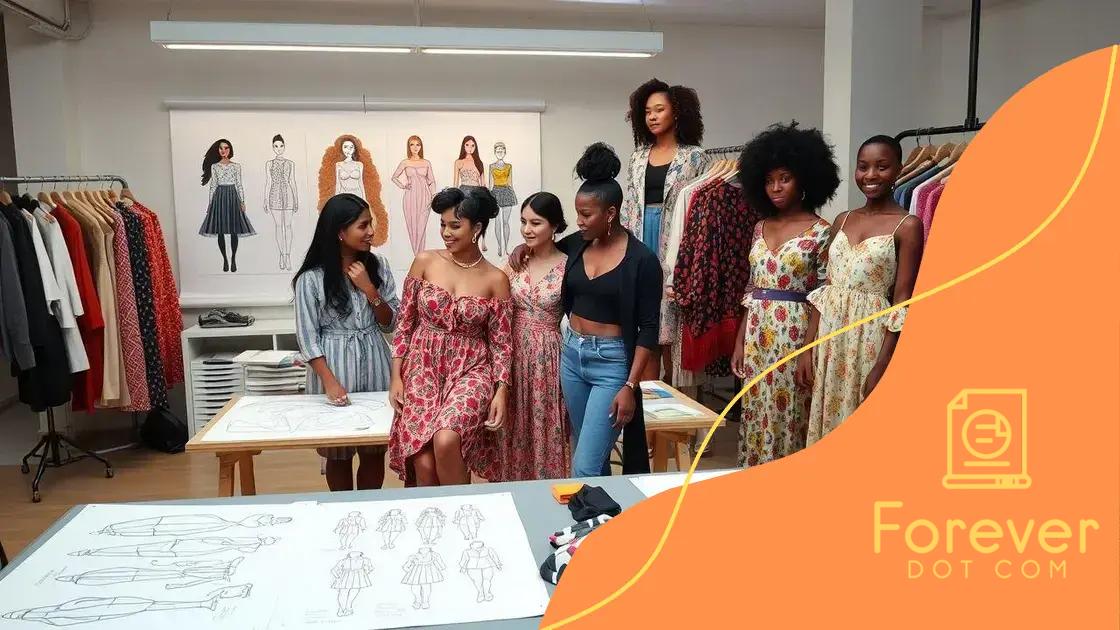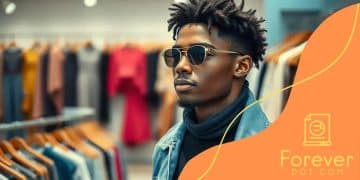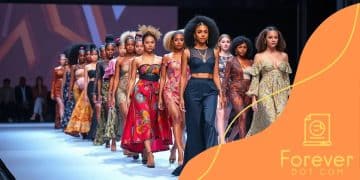Inclusive runway shows breaking industry norms

Inclusive runway shows breaking industry norms promote diversity by showcasing models of various sizes, ethnicities, and backgrounds, allowing for a more representative and engaging fashion experience.
Inclusive runway shows breaking industry norms are not just a trend; they’re a movement reshaping how we perceive fashion. Have you ever wondered how these shows are challenging the status quo and fostering representation? Let’s explore the evolution and impact of this change.
The evolution of runway shows
The evolution of runway shows over the years has significantly shaped the fashion industry. Traditionally, these events focused on a narrow standard of beauty, showcasing models who fit specific criteria. However, as society evolved, so did the representation on the runways. Today, we see a broader spectrum of beauty and diversity, reflecting real-world demographics.
Changing Standards
Fashion is now embracing variety in body types, ethnicities, and gender identities. This change began gaining traction in the early 2000s as designers started to recognize the importance of inclusivity.
Key Milestones
- The introduction of plus-size models in mainstream fashion.
- Prominent designers showcasing diverse talents.
- Colaborations with models advocating for inclusivity.
These milestones have contributed to a shift in public perception. Audiences are more aware of the importance of representation, which further influences designers to include diverse models in their shows.
As we look to the future, the trend of inclusivity appears more prominent than ever. Innovative designers are realizing that embracing diversity not only enriches their shows but resonates deeply with consumers. This living, breathing art form is evolving to tell stories of real people.
Ultimately, the evolution of runway shows mirrors broader societal changes. As fashion continues to break down barriers, it creates a more inclusive and diverse landscape, inviting everyone to be a part of the conversation.
Breaking barriers: Diversity in the spotlight
Breaking barriers: diversity in the spotlight has become a significant theme in modern fashion. As the industry evolves, the representation of different cultures, body types, and identities takes center stage.
Impact on Fashion Shows
Fashion shows are no longer just about clothing; they are platforms for expressing stories and advocating for change. Models from various backgrounds are gracing runways, challenging conventional beauty norms. This shift not only enriches the fashion experience but also resonates with audiences worldwide, making them feel included.
- Increased visibility for underrepresented groups.
- Collaboration with diverse talent beyond traditional models.
- Designers using their platforms for social awareness.
With this evolution, many designers are drawing inspiration from diverse cultures. Incorporating ethnic patterns, textures, and traditions creates a richer narrative. Showcasing a variety of models helps highlight the beauty found in differences, inviting more people to connect with fashion.
Moreover, breaking these barriers paves the way for younger generations. Aspiring models see themselves represented on the runway, which instills confidence that they, too, can be part of this vibrant industry. This representation stretches beyond just size or race; it includes age, ability, and gender.
As we continue to push boundaries, the vision for fashion grows more inclusive and dynamic. The focus on diversity not only celebrates individuality but also elevates the art of fashion itself.
Impact on designers and brands

The impact on designers and brands in today’s fashion landscape is profound. As inclusivity and diversity become crucial elements, designers are being challenged to adapt their visions and practices.
Evolving Design Concepts
Designers are increasingly incorporating a wider range of body shapes and sizes into their collections. This shift encourages creativity and innovation, leading to new styles that cater to a more diverse audience. As a result, brands that embrace this change often see a positive response from consumers.
- Growth in demand for varied sizing options.
- Increased collaboration with diverse models and influencers.
- Focus on sustainable and ethical fashion practices.
Brands are also recognizing that consumers want to see their values reflected in the products they purchase. Many now prioritize collaborations with designers who advocate for social justice and environmental sustainability. This not only boosts brand image but fosters loyalty among customers who value those principles.
By spotlighting diverse stories, designers can resonate with a larger audience. This approach allows brands to break free from the traditional marketing strategies that often exclude many groups.
Furthermore, successful brands develop strategies that highlight their commitment to inclusivity. This can range from runway shows featuring models of all backgrounds to campaigns that celebrate individuality and diversity. By embracing these changes, brands can create a more inclusive fashion environment that reflects the diversity of the world around us.
Audience reactions and industry changes
Audience reactions and industry changes are closely linked in today’s fashion world. As diverse runway shows gain traction, audiences respond with enthusiasm and curiosity.
Changing Consumer Preferences
With the rise of inclusivity, consumers are beginning to expect more from brands. They want to see themselves represented in fashion. As a result, there has been a noticeable shift in purchasing decisions, where shoppers favor brands that showcase diverse models and promote body positivity.
- Increased demand for diverse representation in marketing.
- Support for brands that prioritize social issues.
- Engagement on social media platforms highlighting these trends.
Audiences are vocal about their preferences. Many share their opinions through social media channels, influencing how brands approach their marketing strategies. This shift has led several companies to reevaluate their targets, ensuring they align with the modern consumer.
Furthermore, industry changes are a direct response to these audience reactions. Fashion shows now aim to be more than just visual spectacles; they are becoming platforms for activism and representation. Designers understand that to engage the new generation, they must reflect society’s diversity.
The emergence of new voices in the industry is also noteworthy. Many young designers are breaking into the market, bringing fresh ideas that challenge old norms. This generational shift not only promotes innovation but also highlights the importance of listening to audience feedback.
As we observe audience reactions, it is clear that the call for change is resonating. The fashion industry is now at a turning point, focusing on what consumers truly value—authenticity, inclusivity, and representation.
Future trends in inclusive fashion shows
Future trends in inclusive fashion shows promise exciting developments as the industry continues to evolve. Many designers are looking ahead to create a more inclusive environment on the runway.
Embracing Technology
As technology becomes more prevalent, virtual and augmented reality will play a role in showcasing designs. This technology allows designers to create immersive experiences that highlight diversity in new ways. Audiences can explore fashion in unique settings, feeling connected to the stories being told.
- Increased use of virtual models that mirror real diversity.
- Interactive browsing experiences for viewers online.
- Integration of social media platforms to expand reach.
Moreover, sustainability is becoming a core focus. Designers are prioritizing eco-friendly materials that reduce waste. This trend promotes not only inclusivity but also responsibility toward our planet. Consumers increasingly seek brands that are committed to both social and environmental issues.
Future fashion shows will likely reflect a broader representation of body types and backgrounds. This means more major brands will collaborate with diverse talents and models. As this happens, smaller labels focused on inclusion will gain attention, driving the industry toward a more balanced representation.
Additionally, we can expect to see a greater emphasis on the stories behind the garments. Designers will focus more on the narratives of various cultures and communities, allowing for richer storytelling on the runway.
This forward momentum creates a space where everyone feels they belong. The future of fashion is not just about clothing; it’s about creating a community that values diversity and inclusivity for all.
FAQ – Frequently Asked Questions about Inclusive Fashion Shows
What is the importance of diversity in fashion shows?
Diversity in fashion shows reflects real-world demographics and allows more people to see themselves represented, fostering inclusivity.
How are technology and fashion shows connected?
Technology enhances fashion shows by creating interactive experiences, such as virtual reality, allowing audiences to engage with the designs in immersive ways.
What role does sustainability play in modern fashion?
Sustainability is crucial as designers increasingly use eco-friendly materials and practices, responding to consumer demand for responsible fashion.
How has audience reaction influenced the fashion industry?
Audience reactions, especially on social media, have pushed brands to adopt more inclusive practices and represent a wider range of identities and body types.






